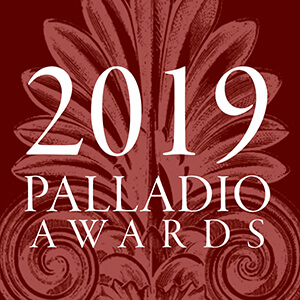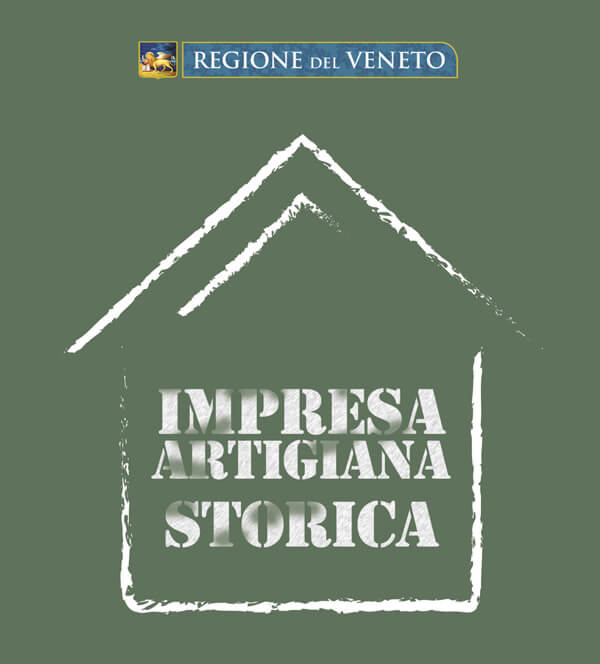
The Istrian stone in Italy: artistic heritage of monuments and sculptures
The Istrian stone has been a great success in Italy, especially in Venice. It has been widely used in architecture and in structural and artistic works, both for its chromatic quality and for its technical characteristics. In ancient, medieval and modern times majestic monuments, historic buildings, churches, bridges, canals and wells were built.
It is possible to admire the beauty of imposing and extraordinary artistic works made in Istrian stone, especially in the territories of the Venetian Republic. Unfortunately, many sculptures have been stolen or destroyed by the Napoleonic dispossessions.
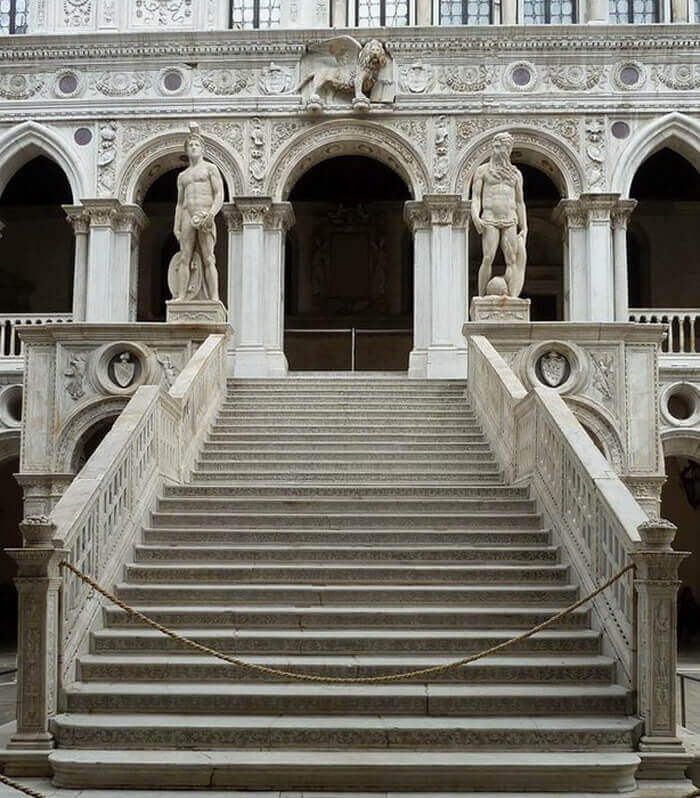
Scala dei Giganti in Istrian stone, Palazzo Ducale – Venice
Monuments, art works and sculptures in Istria stone in Venice
The Istrian stone marks the beauty of one of the most important Italian art cities: Venice.
Among the magnificent monuments and the famous historic buildings, built during the period of the Serenissima Republic, we can admire:
- Palazzo Ducale
- Porta della Carta
- Scala dei Giganti
- Scala Contarini del Bovolo
- Ponte dei Sospiri
- Ponte di Rialto
- Ponte degli Scalzi
- Palazzo Grassi
- Palazzo Malipiero Trevisan
- Palazzo Grimani Marcello
- Chiesa del Redentore
- Chiesa della Salute
- Chiesa dei Miracoli
- Scuola Grande di San Marco

Porta della Carta in Istrian Stone – Venice

Detail of a capital in Istrian Stone, Palazzo Ducale – Venice
On the facades of the palaces we find the characteristic medieval sculptures which distinguish the Venetian streets, such as the pateras, the tiles, the heraldic bas-reliefs and the lions of Saint Mark. The first winged lion in Istrian stone was carved at the beginning of 1300.
In the Venetian fields and courtyards we can admire the typical wells and the well curbs, we have realized many types of them inspired by Venetian wells.

Ponte dei Sospiri in Istrian stone – Venice
The beauty of Italian monuments in Istria stone
Among the most famous monuments and the oldest sculptures in other Italian cities, we find:
- in Rimini: the Arch of Augustus built in 27 B.C. and covered with Istria stone;
- in Ravenna: the Mausoleum of Teodorico, where the dome is made by a monolith extracted in 520 A.D. and transported by sea, with a diameter of almost 11 meters and a weight of about 230 tons;
- in Trieste: the castle of Miramare and the recent Victory Lighthouse completed in 1927;
- in Ancona: the Sanctuary of the Holy House of Loreto built by Vanvitelli during the XVIIIth century;
- in Bologna:the sculptures of Porta Magna of the Basilica of San Petronio and the Church of San Giacomo;
- in Padova: the Ognissanti Door on the Portello river port and Palazzo del Capitanio;
- in Cesena: the Masini fountain;
- in Recanati: the portal of the Church of Sant’Agostino.
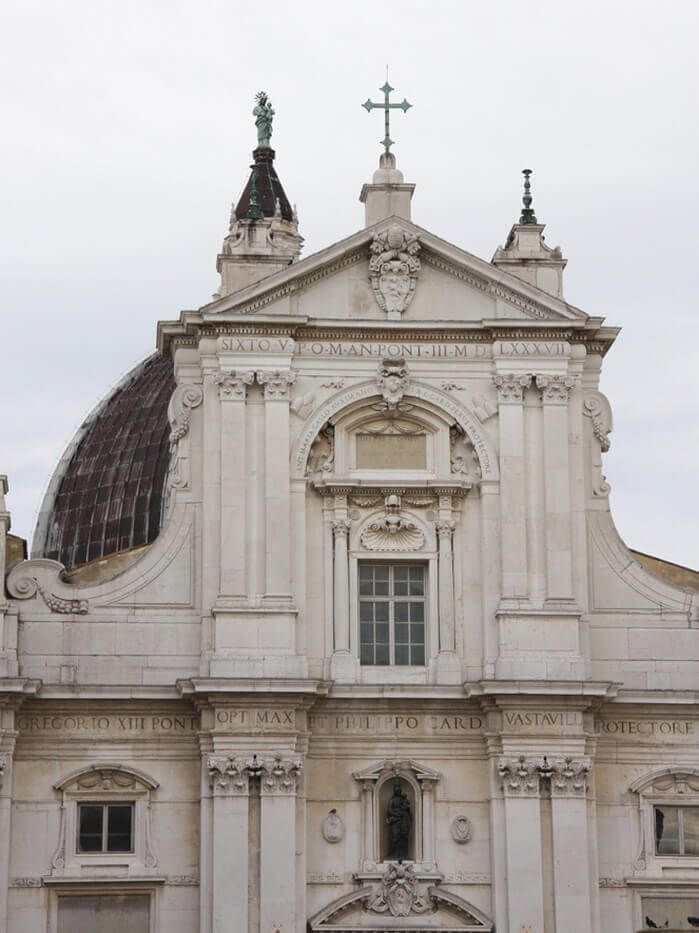
Sanctuary of the Holy House in Istrian stone – Loreto
Among the great sculptors, who used this famous Istrian stone, we remember the Venetian Leonardo Tagliapietra and the Veronese Antonio Rizzo.
Even the Italian architect Andrea Palladio has used it to embellish the gardens of the Venetian villas and to decorate the churches of Venice.
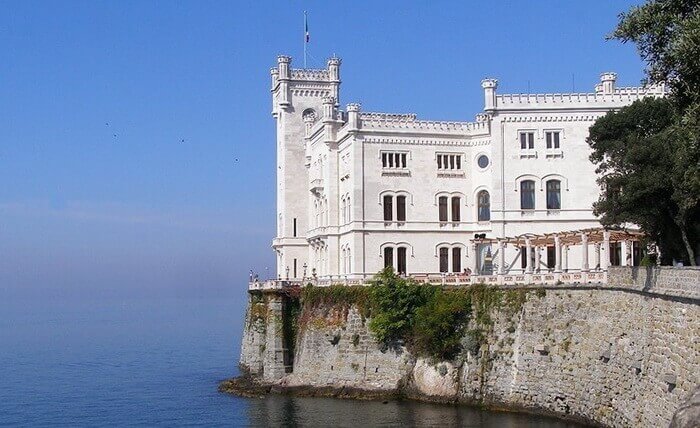
Castle of Miramare in Istrian stone
John Ruskin admires and tells the stones of Venice
The English John Ruskin (1819-1900) was an important painter, writer, poet and art critic in the international art field. He was an aesthete, an enthusiast of creative and artistic activity and a supporter of Gothic craftsmanship where man was free to express himself. He wanted to defend the eternal beauty and uniqueness of the lagoon city, to which he was strongly attached, but at the same time tell the fragility and the cultural, civil and artistic decline of modernity. He dedicated an exciting book to the stones used to build Venice, including the Istrian Stone, which later became one of the most fascinating essays on art, literature and architectural philosophy. In the book he says:
“… read the sculptures. [… ] the criticism of the building will be conducted like that of a book; it will depend on the knowledge, sensitivity and on the good will and perseverance of the reader, if, even in the case of the best works, he will perceive its greatness or will only feel its entertainment ability.”
John Ruskin, Le pietre di Venezia, Italian release Mondadori, 2000, p.131 (original edition The Stones of Venice, Moyer Bell Ltd, Great Britain 1853)
This article contains general information. For questions and curiosities leave a comment below. If you wish to be contacted, please fill out the form.
